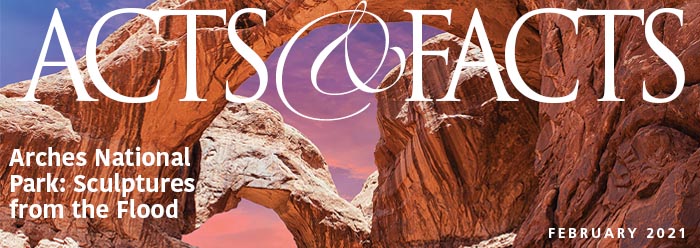Search Tools
New Defender's Study Bible Notes
20:30 signs. The “signs” are “miracles” (same Greek word). These seven miracles chosen by John for exposition in his gospel as evidence of Christ’s deity are all miracles of creation (as distinct from miracles of providence which simply control rates or timing of natural processes), requiring suspension of one or both of the basic laws of science, also known as the First and Second Laws of Thermodynamics, namely: the law of conservation of matter or available energy, and the law of decreasing organization and/or energy. The signs are as follows: (1) turning water into wine (John 2:3-11); (2) healing of the terminal illness of a nobleman’s son by a word spoken six miles away (John 4:46-54); (3) new limbs for a lifelong hopelessly crippled man (John 5:2-9); (4) the feeding of a multitude with a few loaves and fishes (John 6:5-14); (5) walking on the water (John 6:15-21); (6) new eyes for a man born blind (John 9:1-7); and (7) the raising of Lazarus from the dead (John 11:3-44).
20:31 that ye might believe. Here John states that his specific purpose in writing was to win people to Christ. It is very significant that the divinely inspired method of doing this (as well as serving as an authoritative guide for methods of evangelism today) began with a strong affirmation of the special creation of all things by Christ, followed by a strong presentation of the program of redemption. In addition to the evidences provided by the miracles performed by Christ, John stresses the evidences of His resurrection and victory over death—especially the evidence of the empty tomb (John 20:8) and the post-resurrection appearances (John 20:20, etc.). Finally, the written Word itself gives abundant evidence of inspiration, and thus itself is a strong evidence (John 20:31).






